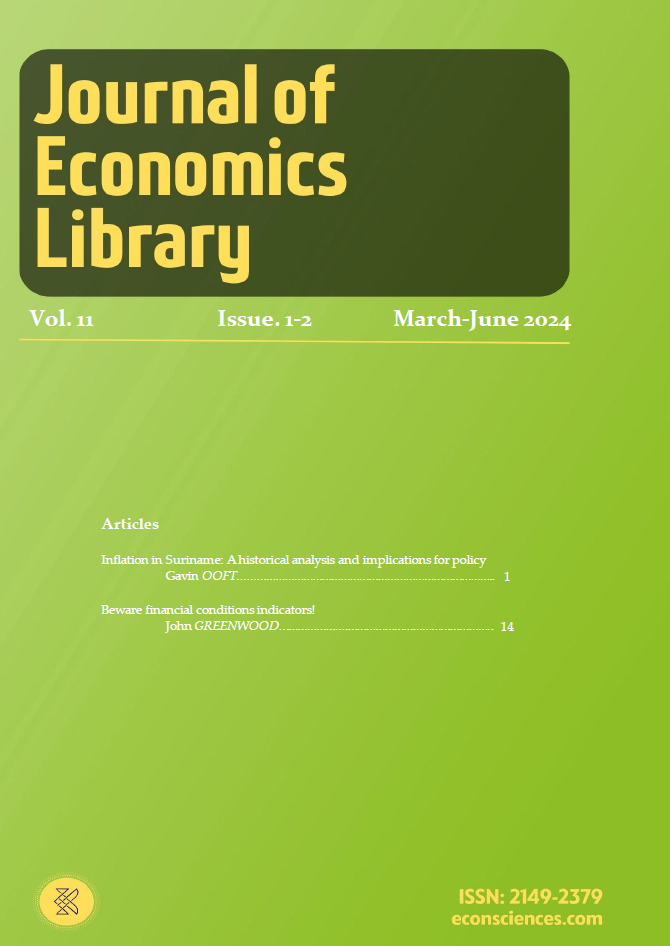Abstract
This paper compares two versions of the transmission mechanism of monetary policy: the monetarist model and the widely popular Financial Conditions Index (FCI) model. The focus is on the role of interest rates and spreads as indicators of the business cycle. In the monetarist model, following a sustained upswing or downswing in the rate of growth of money, theory and evidence point to two subsequent stages for interest rates – first the liquidity effect, followed by the Fisher effect. These two movements are in opposite directions, both being effects of prior monetary growth. The first effect is typically quite brief; the latter effect usually lasts much longer. I find that the monetarist model fits the experience since March 2020 like a glove. By contrast, the FCI model generally ignores monetary growth and constructs an index consisting of a composite of rates, spreads and other financial market indicators. This index is taken as the driver for subsequent moves in asset prices, credit market developments and their impact on the real economy. To my knowledge, the FCI model is nowhere fully articulated and is only vaguely specified in mathematical terms. Based on evidence from business cycle developments since the onset of Covid for the US, the euro-area, and the UK, the FCI results are shown to be inconsistent and sometimes contradictory.
Keywords. Monetary economics; Business cycle, Interest rates; Inflation.
JEL. E19; E32; E52; G10.
References
Bank of England, (2019). How can we measure UK financial conditions?. [Retrieved from].
Bank of England, (2021). How do we monitor UK financial conditions?. [Retrieved from].
Bloomberg, (2022). Why Financial Conditions Are Easing After the Fed Raised Rates. [Retrieved from].
Bloomberg, (2023). Transcript: Mervyn King Says the Bank of England Is Making a ‘Big Mistake’. [Retrieved from].
Borio, C., Hofmann, B., & Zakrajšek, E. (2023). Does money growth help explain the recent inflation surge?. BIS Bulletin, No.67. [Retrieved from].
Broadbent, B. (2023). Monetary policy: prices versus quantities – speech. Bank of England. [Retrieved from].
Federal Reserve Bank of St. Louis, (2023). St. Louis Fed Financial Stress Index [STLFSI4]. [Retrieved from].
Financial Times, (2023). Bank of England warns of future UK rate rises if inflation persists. [Retrieved from].
Fisher, I. (1906). The Nature of Capital and Income. New York: Macmillan Co.
Fisher, I. (1907). The Rate of Interest. New York: The Macmillan Co.
Friedman, M. (1963). Money and Business Cycles, section III, A Tentative Sketch of the Mechanism Transmitting Monetary Changes, pp.229-234
Schnabel, I. (2023). Thünen Lecture by Isabel Schnabel, Member of the Executive Board of the ECB, at the annual conference of the Verein für Socialpolitik. [Retrieved from].
Tenreyro, S. (2023). Quantitative easing and quantitative tightening – speech. Bank of England. [Retrieved from].

This work is licensed under a Creative Commons Attribution-NonCommercial 4.0 International License.
